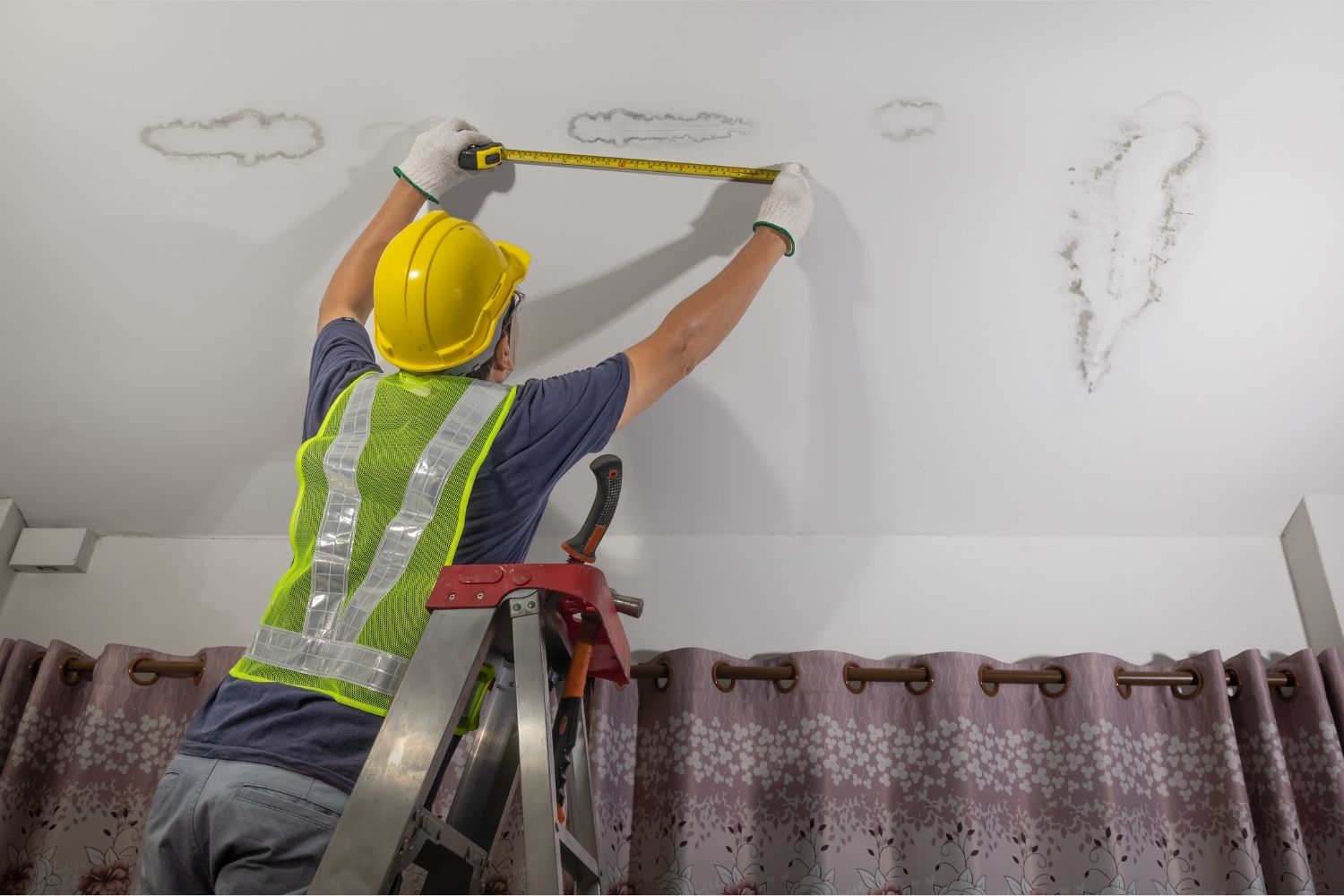Flat roofs have a certain sleek charm, don’t they? They give modern buildings that minimalist edge and often serve as usable outdoor space – think rooftop gardens or terraces. But there’s a flip side. Unlike pitched roofs that shed water like ducks in the rain, flat roofs need a bit more TLC. When neglected, they can spring leaks faster than you can say “umbrella”.
The Hidden Risks Beneath the Surface
At first glance, everything may look sound up there. But beneath the surface, minor issues can quietly evolve into major headaches. It’s not just about rain sneaking in; it’s about how and why it’s getting in. Let’s break it down.
Common Causes of Flat Roof Leaks
Aging and Weathering
Everything ages – people, pets, and yes, roofs. Time is not kind to roofing materials, especially when they face the unrelenting British weather year-round.
Sun Exposure and UV Damage
Even in the UK, the sun isn’t as harmless as it seems. UV rays beat down on your roof every day, drying it out and causing the protective membrane to crack and shrink over time.
Shrinking Membrane and Weak Seams
As the roofing material contracts and stretches with temperature changes, the seams – those connection lines between sheets – weaken. Eventually, water sees these as open doors.
Punctures and Physical Damage
Your roof isn’t a trampoline, but sometimes it’s treated like one.
Impact from Falling Debris
Storms can hurl branches like darts. Even one strike from a hefty branch can puncture the membrane, setting the stage for future leaks.
Foot Traffic and Equipment Mishandling
Maintenance workers or even enthusiastic DIYers can leave behind more than just footprints. Sharp tools, misplaced furniture, or careless walking can create holes without anyone noticing—until water pours in.
Ponding Water
Water is patient. Give it time and a flat surface, and it’ll find its way in.
Why Drainage Matters
Flat roofs can drain properly—but only if they’re designed and maintained well. Poor slope design or blocked gutters leave puddles that linger.
Effects of Standing Water Over Time
A mini lake may seem harmless. But the longer water sits, the more pressure it puts on the membrane, forcing its way through weak points like a determined leak ninja.
Flashing Failures
Flashings are those metal strips where the roof meets walls, chimneys, or skylights. Think of them as the seams in a waterproof coat.
Rust and Wear
Metal doesn’t age gracefully. Flashings can rust, warp, or become brittle, creating gaps that let water sneak in.
Poor Installation Practices
If your flashings were installed by someone who fancied themselves a roofer after watching a few online tutorials, it may not be sealed properly—leaving you with leaks in the most vulnerable places.
Drainage System Issues
If the roof is the battlefield, the drainage system is the escape plan. And when it fails, chaos ensues.
Clogged Gutters and Drains
Leaves, moss, bird nests – they all love a cosy gutter. But blocked drainage causes backups, turning your roof into a paddling pool.
Overflowing Scuppers and Broken Downspouts
Overflow points (called scuppers) and downspouts are meant to carry water away quickly. If they’re cracked or blocked, water pools and eventually finds its way in, not out.
Lesser-Known Causes of Flat Roof Leaks
Thermal Movement and Roof Expansion
Roofs expand and contract as temperatures change. Over time, this thermal movement can stretch the roofing material, causing splits or seam failures that become leak entry points.
Poor Installation Workmanship
You could have the best materials in the world, but if the installation was botched, it won’t matter. Misaligned seams, bad adhesive, and improperly applied membranes are leak invitations.
Incompatible Roofing Materials
Sometimes, contractors use incompatible materials that don’t bond well. For instance, mixing rubber with certain adhesives can reduce waterproofing and increase the chance of leaks.
How to Spot a Flat Roof Leak Early
Visual Signs Indoors and Outdoors
Got water stains on your ceiling? That’s not a coffee spill—it’s your roof crying for help. Also look for blistered paint, warped wood, or even bubbling wallpaper.
Musty Odours and Damp Ceilings
Damp smells that don’t go away are a giveaway. So is that damp patch in the corner of your ceiling that gets darker every time it rains.
Using Infrared Scanning or Moisture Meters
Professional tools like thermal imaging or moisture meters can detect hidden leaks before they become visible disasters. Worth considering, especially for commercial flat roofs.
Preventative Maintenance Tips
Routine Roof Inspections
Have a professional give your roof a look at least twice a year—preferably in spring and autumn. They can spot cracks, weak seams, and signs of aging before they let water in.
Keeping the Roof Clean and Debris-Free
Don’t let your flat roof become a mossy garden. Sweep off leaves, twigs, and any debris that can trap water or block drainage.
Maintaining Drainage and Flashings
Clear those gutters and scuppers regularly. And check flashings for rust or gaps. A little effort now saves a lot of stress later.
When to Call a Professional Roofer
If you see signs of a leak or suspect trouble, don’t gamble on a YouTube tutorial. A licensed roofer knows how to assess, repair, and prevent leaks using the right tools and techniques. Especially in the UK, where weather can change faster than a plot twist in a crime drama, it pays to be proactive.
Conclusion
Flat roofs might be stylish and space-efficient, but they demand respect. From ageing membranes and sneaky puddles to damaged flashings and clogged drains, the list of leak triggers is longer than you’d expect. The good news? Most flat roof leaks can be prevented—or at least caught early—through routine maintenance and smart inspections. Treat your flat roof like the protective hat it is, and it’ll shield you from storms for years to come.
Frequently Asked Questions
1. How long should a flat roof last before it starts leaking?
A well-installed and maintained flat roof can last 20–30 years. But after 10–15 years, it’s wise to keep a close eye on it for early signs of trouble.
2. Can I fix a flat roof leak myself?
Minor leaks or patch jobs may be DIY-friendly if you know what you’re doing. But for anything major, always call in a pro. A botched fix can make things worse.
3. How often should a flat roof be inspected?
Ideally, twice a year—once in spring and once in autumn. And definitely after a major storm or heavy snowfall.
4. What type of flat roof material is most leak-resistant?
EPDM rubber, TPO, and PVC roofing materials are known for their durability and resistance to leaks. Proper installation and maintenance still matter, though.
5. Does homeowner insurance cover flat roof leaks?
It depends on your policy. If the leak results from sudden damage (like a storm), you’re likely covered. But leaks from neglect or poor maintenance might not be.




